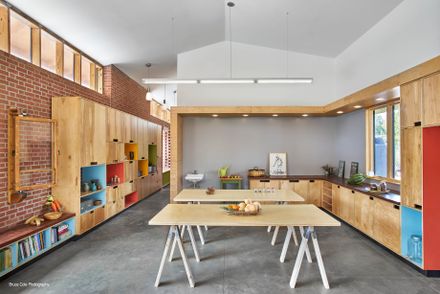
Beardsley Community Farm Education Center
Beardsley Community Farm Education Center
Elizabeth Eason Architecture, University of Tennessee College of Architecture and Design
ARCHITECTS
Elizabeth Eason Architecture, University of Tennessee College of Architecture and Design
BUDGET
$100K - 500K
STATUS
Built
SIZE
1000 sqft - 3000 sqft
YEAR
2016
LOCATION
Knoxville, TN, United States
CATEGORY
Educational › Other Government + Health › Community Center Industrial › Farm
Design-build teaching and learning is an innovative approach to educating architects and making architecture, with the potential to advance both the practice and the academy.
Students and faculty from the University of Tennessee’s College of Architecture and Design worked in partnership with Elizabeth Eason Architects and other professionals and city officials to create an innovative public building for Beardsley Community Farm—a non-profit urban farm.
By focusing on meaningful community engagement, students were able to deeply learn aspects of design, craft, and community with profound effect.
Beardsley Community Farm promotes food security and sustainable agriculture through education and community outreach. They have operated out of a public park in an economically-challenged urban neighborhood for 18+ years, making do with very limited resources.
The Education Center includes interior spaces for a multipurpose classroom, administrative offices, and restrooms. The design minimized the conditioned footprint to add sheltered exterior spaces serving as a welcome center, outdoor classroom, mudroom for vegetable processing, and a modest amphitheater addressing the park.
The design approach is characterized by a series of overlays and contrasts, just as Beardsley Farm is itself a contrasting entity—a farm within the urban fabric. Ideas of the contemporary vernacular are situated at all scales: site, plan, and detail.
The design thesis is to create architecture that facilitates the Farm’s outreach mission by making a place for meaningful community engagement.
Comprehensive issues of sustainability and craft were critical, as was the emphasis on design leadership and the ethical imperative of contributing to public space.












